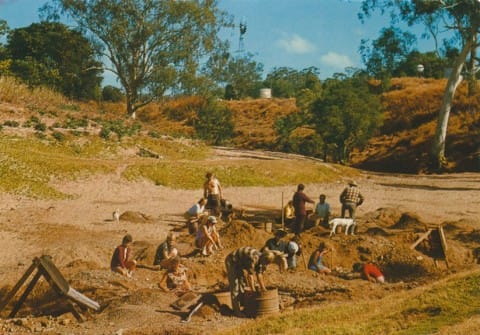Australia stands as a global leader in gemstone mining, celebrated for its diverse and valuable mineral wealth. The industry is experiencing a period of robust growth and transformation, driven by a combination of high-value exports, a shift towards ethical practices, and the integration of new technologies. This sector is a significant contributor to the Australian economy, supporting thousands of jobs and generating substantial revenue through exports and tourism.

Australia’s Gemstone Treasures
Australia’s geological history has blessed it with some of the world’s most sought-after gemstones. The country’s gemstone market was valued at AUD 463.83 million in 2024 and is projected to expand significantly, reaching an anticipated value of over AUD 1 billion by 2034. The nation’s dominance is particularly notable in a few key areas:
- Opals: Australia is the undisputed world leader in opal production. Famous for its vibrant colours, the Australian opal industry is primarily centered in the outback of South Australia, Queensland, and New South Wales.
- South Australia: Known for its “white” or “milky” opals, with major fields in Coober Pedy, Andamooka, and Mintabie. Coober Pedy, in particular, produces the bulk of the world’s white opal.
- New South Wales: The Lightning Ridge area is world-renowned for its rare and valuable black opals. These are the darkest and most sought-after variety due to trace elements of carbon and iron oxide.
- Queensland: This state is “Boulder Opal Country.” Boulder opal, a unique variety found attached to a host rock like ironstone, is found in deposits throughout the western parts of the state, including Quilpie and Yowah.
- Diamonds: Australia has a significant history as a diamond producer, famed for its rare pink and champagne-coloured diamonds from the now-closed Argyle Mine in Western Australia. While the major operations have ceased, Australia remains a key player in the global diamond market and new exploration and small-scale mining continue in areas like the Merlin Mine in the Northern Territory and Ellendale in Western Australia.
- Sapphires: Australia has a rich history of sapphire mining, particularly in the eastern part of the country. The Central Queensland gemfields, encompassing the towns of Sapphire, Rubyvale, and Anakie, are one of the world’s largest sapphire-bearing areas. The New England district of New South Wales, around Inverell and Glen Innes, is also a major source. Australian sapphires are known for their unique blue-green or “parti-colored” hues.
Beyond these three, Australia also produces a variety of other precious and semi-precious stones, including rubies, emeralds, garnets, topaz, and jade.
Technological and Ethical Advancements
The Australian gemstone mining sector is undergoing a transformation, moving towards more sustainable and technologically advanced operations. The industry is embracing smarter technologies and ethical practices to enhance efficiency and meet growing global consumer demand for responsibly sourced gems.
- Innovation: The sector is adopting advanced technologies, including artificial intelligence for exploration and data analysis to improve operational decisions. AI and laser-based grading systems are also being used to enhance efficiency and reduce waste in the cutting and processing of gemstones.
- Ethical Sourcing and Sustainability: With increasing global consumer awareness, Australian gemstone producers are prioritizing ethical and environmentally friendly practices. This includes enforcing fair labour standards and adopting eco-friendly mining technologies. The push for traceable supply chains and third-party certifications is a key trend, helping Australian companies to differentiate themselves in the competitive international market.
Economic Impact and Future Outlook
The gemstone industry is an important part of Australia’s broader mining sector, which contributes significantly to the national economy. Heightened investment in mineral exploration, which saw a 13% increase to AUD 4 billion, is accelerating the discovery and development of high-value gemstones.
- Economic Contribution: Gemstone mining generates substantial revenue through exports, with Australian gems being highly valued globally. It also plays a vital role in regional economies, particularly in remote areas, where it supports local businesses and fosters tourism. Many small-scale miners and “fossickers” also contribute to the local economies of these gem towns.
- Challenges and Opportunities: The industry faces challenges such as global competition, geopolitical uncertainty, and labour shortages. However, by strategically investing in innovation, infrastructure, and sustainable mining practices, Australia is well-positioned to maintain its global leadership. The rising demand for transparent and ethically sourced gemstones presents a significant opportunity for Australia to further solidify its reputation as a reliable and responsible supplier.
In conclusion, Australia’s gemstone mining industry is in a dynamic phase of growth. While its historical dominance in opals and pink diamonds remains a key part of its identity, the sector is forward-looking, integrating technology and a strong commitment to ethical practices. This ensures not only its continued economic importance but also its resilience and relevance in a changing global market.
